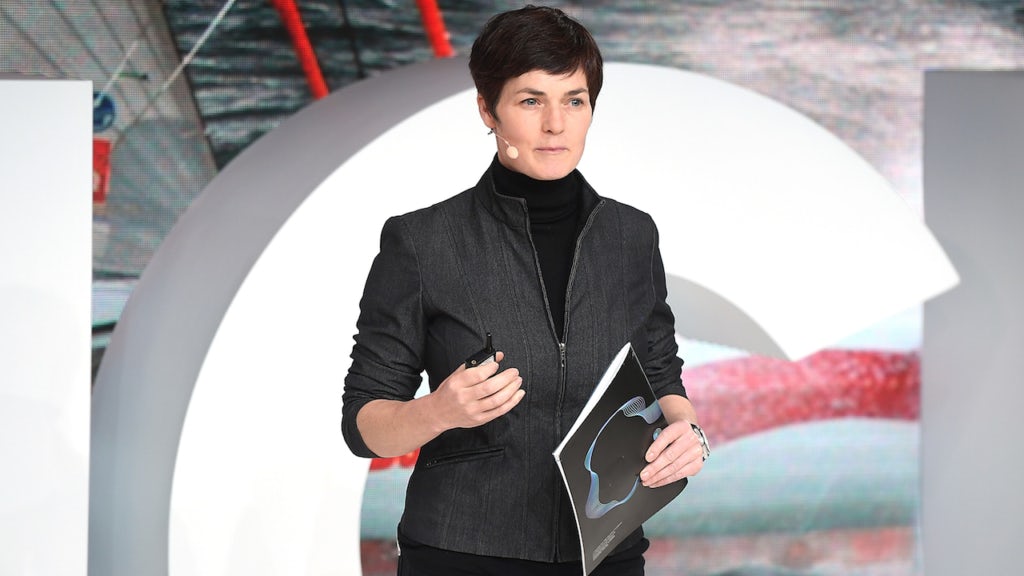As fashion's focus shifts to a circular economy, in 2018 sustainability will evolve from being a menu of fragmented initiatives to being an integral and defining part of the entire fashion value chain.
LONDON, United Kingdom — Sustainability will be at the centre of innovation in the fashion industry in 2018, with front-runners harnessing the circular economy to unlock technical innovations, efficiencies, and mission orientation. Fashion companies have started to embrace the importance of sustainability, with 42 out of 100 fashion brands in 2017 disclosing supplier information. Leading companies will go further, moving to close the loop of the entire product lifecycle by means of recycling and regeneration. As focus shifts to a circular economy, sustainability will evolve from being a menu of fragmented initiatives to being an integral and defining part of the entire fashion value chain.
An important force behind the growing sustainability movement is the realisation that sustainability leadership can serve as a real source of differentiation, as has been observed with Patagonia, which has earned a large and loyal customer base through its relentless focus on sustainability from product development to innovative campaigns and involvement in sustainability initiatives. Millennials in particular are interested in more-sustainable solutions; 66 percent of global Millennials are willing to spend more on brands that are sustainable. “Sustainability, interestingly, it's really important with the young generation,” says Levi Strauss’s Chip Bergh. “In China... the value they place on how brands do business, what brands stand for is off-the-charts compared to any prior generation.”

Dame Ellen MacArthur at VOICES 2017 | Source: Getty Images
As consumer attention on sustainability issues increases, sustainability leaders can use their advantage to promote revenue growth. Sustainability will also be accelerated by advancements in technology across materials, products and processes. A next-level focus on sustainability has the potential to drive technical and process innovation, strengthen the bottom line by means of radical process reengineering, and improve transparency and risk management.
The industry’s growing focus on sustainability is also being driven by passionate industry pioneers. For example, the Ellen MacArthur Foundation has created the Circular Fibres Initiative, bringing together industry stakeholders to move from the “take-make-dispose” approach to a circular economy for textiles. Building on the success of the New Plastics Economy initiative, the Circular Fibres Initiative’s vision is to develop a new system for textile building on circular economy principles of restoration and regeneration. Another player in this movement is the Danish Fashion Institute, whose Global Fashion Agenda raises awareness on sustainability in the fashion industry.
Fashion companies can find potential opportunities across the entire value chain. Some fashion players experiment with innovation in materials, like sustainable fibres. Radically innovative products already exist; after years of development, C&A introduced a “Cradle-to-cradle certified” T-shirt at a mass-market price, demonstrating one possible future model of circular fashion production. We expect the commercialisation of sustainable prototypes — something which has so far often been missing — to ramp up in 2018, as is the case with recycled polyester, which is increasingly being used by mass- market players. We also expect to see alternative business models and new concepts centred around sustainability. A recent example is Arket, H&M’s new brand of clothing. In addition to incorporating sustainability into the end-to-end processes and product lifecycle, H&M has defined the brand concept around longevity, with an emphasis on enduring design and quality.
"As the commercial advantages become apparent, a dedicated group of sustainability champions will lead the way."
Another important topic will be the issue of waste. Zara, for example, is installing collection bins across all stores in China, H&M invested in Re:Newcell and Eileen Fisher’s Renew program mends or resews clothes for reuse. Areas like on-demand manufacturing and supply chain process reengineering are worth exploring; Adidas’ 3D printed sneakers are a case in point.
We believe more fashion startups and initiatives built around the business idea of sustainable fashion will break new ground in 2018. Examples range from Ambercycle, which uses microbes to break down polyester for re-use in new textiles and Modern Meadow, which grows leather in a lab, to efforts like the Indian Restart Fashion initiative, which brings together designers who make clothes from post-consumer products. In addition, we may see more progressive incumbents take advantage of startups’ innovations to drive their own sustainability efforts. Take, for example, North Face, which collaborated with Spiber to develop a parka made of faux spider silk. Fashion for Good is promoting startups in this area. It is collaborating with incubators and other apparel companies to provide funding and operational expertise for developing innovations that promote sustainable practices.
In sum, 2018 will bring to fruition the “next level” of sustainability and offer the potential of a competitive advantage for fashion companies who embrace it fully. As the commercial advantages become apparent, a dedicated group of sustainability champions will lead the way, showing the fashion industry how to drive innovation and value by integrating sustainability across the entire value chain.
This article first appeared in The State of Fashion 2018, BoF and McKinsey & Company's in-depth report on the global fashion industry. Download it here.


